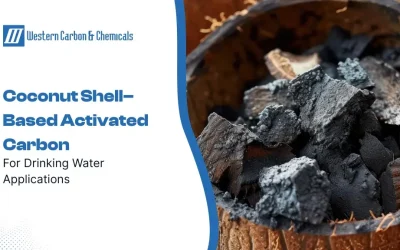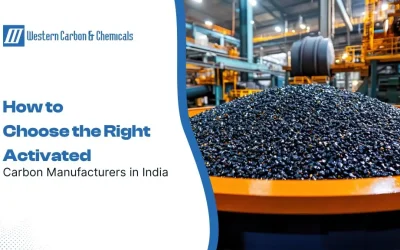Biogas is produced by the breaking of organic matter in landfills, agriculture waste, wastewater treatment plants and anaerobic digestion facilities. It creates renewable energy by combining heat and power (CHP) machines or through injection into natural gas grind in which the biogas upgrading process forms high-purity biomethane. To use biogas as a fuel it needs to be purified and gases separated. This is where activated carbon is used to remove contaminants like hydrogen sulfide and VOCs such as limonene, pipene and siloxane.
What is Biogas?
Biogas is the methane formed by anaerobic digestion of organic matter. The raw biogas is a mixture of various gases like methane (CH4), carbon dioxide (Co2), hydrogen sulfide (H2S), volatile organic compounds (VOCs) and atmosphere gases like oxygen (O2) and nitrogen (N2). Activated carbon is used in the renewable energy industry for biogas filtration or biogas upgrades to remove contaminants like hydrogen sulfide and VOCs. Western Carbon & Chemicals is one of the top activated carbon manufacturers in the world serving the renewable energy industry with high-purity activated carbon products. We offer granular activated carbon (GAC), extruded activated carbon (EAC) and impregnated activated carbon for biogas purification/filtration and biogas upgrading applications.
Biogas Purification with Activated Carbon
The raw biogas undergoes various processing steps and stages to upgrade it to renewable natural gas or direct combustion fuel. Activated carbon is used in the below process for upgrading biogas.
Biogas Applications with Activated Carbon
-
Removal of Hydrogen Sulfide –
Hydrogen sulfide is removed at the initial stage of biogas upgrading. This is because H2S is corrosive in nature and can affect the downstream process. GAC is typically used for this application for its excellent load-bearing capability and high adsorption properties.
-
Removal of VOCs –
VOCs are found in all types of biogas but predominantly in landfill gas and agricultural biogas. They are removed from renewable natural gas as it can impact the downstream operations. VOCs like ammonia, pinene, limonene and other odorous compounds are removed with activated carbon.
-
Removal of Siloxanes –
These volatile siloxane chemicals are comprised of Si-O-Si functional groups. The biogas containing siloxanes when combusted produces silicon dioxide that deposits on the engine and other components that can impact the performance.
-
Removal of Nitrogen –
Atmospheric gases like nitrogen in biogas need to be removed to meet the specific pipeline requirement of renewable natural gas projects. Activated carbon is used in equilibrium PSAs (Pressure Swing Absorption) to separate nitrogen from methane before pipeline injection by selectively absorbing methane.
-
Removal of Carbon Dioxide –
Carbon dioxide is used in raw biogas in the same concentrations as methane. In renewable natural gas operations the carbon dioxide needs to be separated with activated carbon. This can also be done using carbon molecular sieves for C02 removal in PSA systems and biogas.
The role of activated carbon in the biogas upgrading process is indispensable. With high absorbing characteristics it can remove contaminants and toxic gases. Activated carbon is also used for other speciality applications in biogas like the removal of ammonia, mercury, lubricating vapour and more. Western Carbon & Chemicals is a leading activated carbon manufacturer in India, offering activated carbon for biogas applications. Contact us to learn more about activated carbon for your biogas operational processes.





